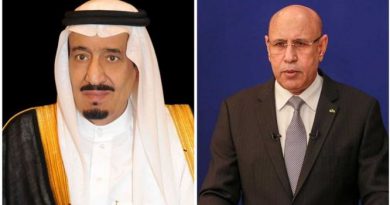SALAFI FACÁDE: The fallacy of serving Brotherhood agenda
by Khaled Hamoud Alshareef
Their radicalism has nothing to do with religion or from the followers of mosques
The word “Wahhabism” has always been mentioned in the West for the purpose of linking terrorism and extremism with Saudi Arabia, creating a stigma that holds Saudi Arabia responsible for the extremism of Muslims around the world in the eyes of the western people.
Since Wahhabism is a corrective grass roots school of Islam that has its origins in the Arabian Peninsula and is what they demonstrate as the predominant religious belief in Saudi Arabia shown as the radical sect of Sunni Islam to Western recipients.
And often labeled as the main culprit in the spread of violent extremism and responsible for the waves of destruction and the violence that gave us ISIS, Al Qaeda, and its like minded terrorist movements based on the ideology of the Muslim Brotherhood and the teachings of Sayed Qutob.
The blame for Terrorist attacks on Wahhabism and the Kingdom of Saudi Arabia began in the late 1990s in the left-wing Western media in order to brand Saudi Arabia with extremism.
This approach originated from organizations such as the Council on American-Islamic Relations and the Brotherhood’s offshoots in Europe in order to divert attention from the complex political, economic and psychological reasons that result in young vulnerable people joining terrorist groups and, in doing so, it impedes our ability to combat terrorism so as to advance the agendas of the Muslim Brotherhood.
Indeed mistakes were made and MB scholars used government platforms to promote for violence, but Wahhabism is a label, the anti-Saudi Jihadi Salafist use, and it is a hardline strain of Islamist extremists that encourages the use of violence in achieving domination.
Grass root Salafism was historically non-political and the overwhelming majority of Salafists were not inclined to violence except for the jihadist Salafism that al-Qaeda, Hamas, Nusra Front and other MB offshoots brought us.
Most political Islamists have nothing to do with what is called Saudi Wahhabism. The Taliban, for example, are branches of the extremist Tablighi group, that claim to be anti-imperialist.
Most of Al Qaeda’s members follow a radical teaching that originated from the Muslim Brotherhood, a movement that is largely variable and colorful in its relationship with the West and its values and opposition.
While some terrorists consider themselves Salafist, Islamic sects that are ideologically opposed to Salafism – Naqshbandi Sufi and Shi’a, among others – have engaged in violent jihad in Iraq, Afghanistan, and Syria under the Al Qaida and ISIS banners.
However, many Western media and many critics portray a completely different picture of reality and blame it all on what they call the Wahhabi ideology of Saudi Arabia.
These arguments lead one to imagine that Global and Homegrown terrorists end up joining the Islamic State by wandering the streets of Paris or Brussels and finding a mosque funded by Saudi Arabia. In this mosque, where they read one book, “The Book of Monotheism,” by Muhammad bin Abdul Wahhab, who established the corrective call.
A week later, the fundamentalists’ message inspires them to travel to the front lines of Syria or plan terrorist attacks in Europe, US or anywhere in the world.
Reality is more complicated. Most of the perpetrators of the terrorist attacks in Europe were young criminals who were known to use alcohol and drug abuse.
Their radicalism has nothing to do with religion or from the followers of mosques and Islamic centers affiliated with MB where they are trained and equipped before embarking on trips to participate in jihad in Syria through Turkey.
What they all share in is the belief that the Islamic world and the West are trapped in a clash of civilizations that cannot be reconciled and that there is no salvation except with the rise of the caliphate.
Likewise, it is incorrect to condemn and describe the Saudis as the backbone of the jihadi groups that have emerged in the Arab world in recent years, as Tunisians represent the largest number of foreign residents in the Islamic state. The group emerged from Iraq. Syria, of course, is a hotbed for jihadists of all stripes.
However, these countries were until recently ruled by secular dictators, who prevented Saudi missionary activities, and in the case of Iraq and Syria, considered Saudi Arabia an enemy.
On the other hand, Saudi Arabia participated in missionary activities in India outside the influence of the Tabligh Group, and in coordination with the Indian government contributed to building mosques, schools, and social service centers. However, hardly any jihadists appeared among India’s population of more than 170 million Muslims.
The revival of a politicized form of radical Islam, which had been occurring in the Arab world since the 1970s, was not only driven by ideology, but by the failure of Arab governments to meet the expectations of their residents and the brutal revenge that was used to suppress the demands for better and more transparent governance. Like Abdul Aziz bin Baz Fatwa condemns the suicide operations.
The current mufti, Abdul Aziz bin Abdullah Al Sheikh, records a stand against the Saudis joining groups fighting abroad, and in line with traditional Salafi teachings, he called on all Muslims to remain obedient to the teachings of tolerance and avoid any form of organized religious and political activity.
Blaming Wahhabism or Salafism on violent radicalism is not just an intellectual misstep or injustice to the Salafists, but rather a distortion that hinders the fight against violent extremism and an understanding of its causes.
Any religious ideology espoused by the radicals is often a mask for other issues. Blaming an ideology such as Salafism or destroying it will not end extremism.
Khaled Homoud Alshareef holds PhD in Business and he earned Masters in Philosophy. He regularly tweets under @0khalodi0.



